How to grow a rose from seeds?

Sometimes it becomes necessary to grow a rose from seeds. This process is not easy, but possible, requiring a long time interval, patience, close attention and careful care. Following a certain algorithm, anyone can get seedlings and grow a full-fledged plant.
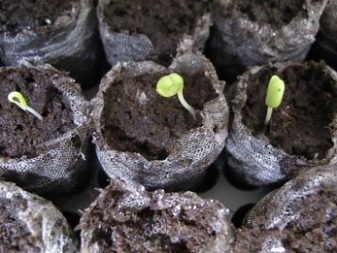

What do seeds look like?
The main way of propagation of a rose is vegetative, that is, by cuttings. Sowing seed is necessary if you want to get a plant with new qualities that are different from the parental ones. Knowing how to apply the method in practice allows you to get what you want, so it is so important not to neglect it. Growing a rose from seeds is possible in two ways:
- seedling;
- reckless.
The second will require less effort, but it is less effective. In this case, much is given to the will of nature, and she is capricious and sometimes unpredictable. The seedling method is almost entirely dependent on the person, not counting the quality of the seed, which makes it possible to greatly increase the productivity.
The seeding method is not without its drawbacks, but the advantages are so weighty that you can put up with the disadvantages, and some can even be minimized.
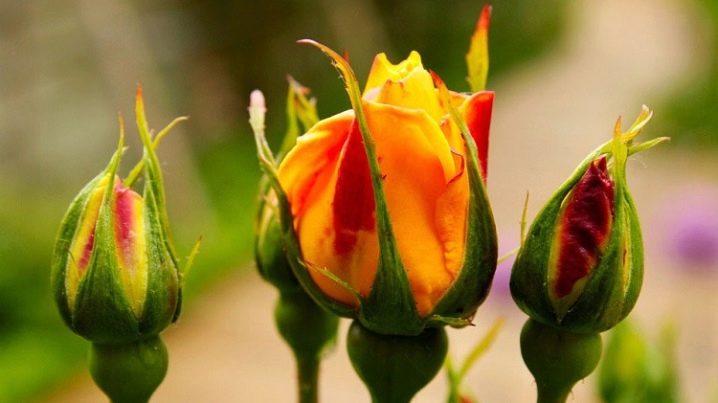
Pros:
- the ability to get a strong viable plant with a powerful root system;
- healthy roots make it possible to multiply the frost resistance of the rose and its ability to heal itself, which is not guaranteed by purchased cuttings;
- plants grown from seeds are actively developing and give strong uterine bushes;
- reproduction of a rose from seeds often leads to very unexpected results, as a result of which the gardener becomes the owner of the original copy;
- even if you do not have your own rose bushes, you can always buy seed from a specialized store.
Minuses:
- purchased seeds do not always have good germination, unlike "home" ones, when the grower can wait for their desired condition;
- a long time period from sowing to germination;
- the inability to get a plant from hybrid varieties;
- Not all types of roses reproduce by seeds.
The appearance of the seeds surprisingly resembles a buckwheat grain, they have the same pyramidal shape, only lighter in color. A single-seeded fruit is a false outer shell that contains a seed. The length is 3-4 millimeters, the color is from pale pink to light brown. The seeds must be well dried, if they show signs of mold, then in this form they are not suitable for sowing. The material should be treated (washed) with hydrogen peroxide and dried well.

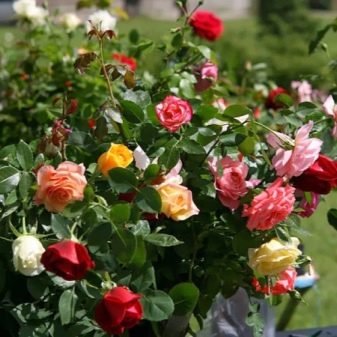
Where to get it and how to choose the right one?
If a decision is made to plant rose seedlings, then seed-growing supermarkets provide a huge selection of planting material. The problem becomes more complicated if the choice is made in favor of self-growing roses from seeds. At the beginning of this process, growers face two options:
- buying seeds in the store:
- self-collection of seed bolls.
In the latter version, they wait until they fully ripen, then collect, carefully cut and remove the seeds. After that, the collected material must be carefully examined in order to select healthy, undamaged specimens, without traces of insects. When looking for seeds of certain varieties, it should be remembered that not all types of roses provide material that conveys parental qualities.
Full-value seeds are obtained from rose hips:
- canine (Rosa Canina);
- spiny (Rosa acicularis);
- wrinkled (Rósa rugósa);
- May (Rosa majalis Herrm).


Except rose hips, suitable for seed cultivation are polyanthus, Chinese, miniature and Sizaya (Rosa glauca) roses. Unfortunately, it is not a fact that the seeds of a black rose will be able to convey parental characteristics - this variety is best propagated by cuttings. You can get seeds from a room rose, in the same way you can propagate a climbing rose.
When buying seed, you should carefully read the characteristics of the variety, take into account the climate for which it is intended. Some of the species and varieties do not tolerate cold and frosty winters, for others the Siberian cold is not a problem. Having set a goal - to grow a rose from seeds, you need to know that the bayonet-rose and the stone rose, despite the names, are not. This clarification is necessary because beginners, inexperienced gardeners often make a similar mistake.
It is not difficult to collect seeds on your own, the main thing is not to miss the deadline, or not to remove them before they reach the desired level of ripeness. Harvesting begins in late July or early August, when a capsule is formed from the bud. It is correct to remove slightly immature, rather elastic brown fruits, whose seeds have a powerful growth force. Before opening, you must choose a sharp knife, and be sure to disinfect it.
After opening the fruit, the seeds are carefully removed, separated from the pulp, washed in cold water, disinfected in a 20% hydrogen peroxide solution and dried thoroughly.
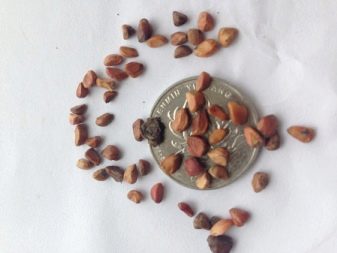
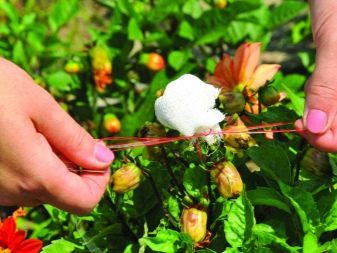
How to grow seedlings?
Growing a rose at home will require attention, patience and even a good memory from the grower. Below it will become clear why good memory is needed in an interesting, multi-stage and lengthy process. For To grow a rose from seed, you can use two methods, one of which is direct sowing in open ground. The algorithm is simplified, requiring almost no attention and intermediate operations, but less efficient than growing at home. It is possible and even desirable to plant, germinate, get seedlings, and see how a beautiful, healthy, full-fledged plant grows at home.
In this case, you will have to apply stratification. The name of the method is derived from a pair of Latin words - stratum and facio, which literally means delamination. This is the artificial creation of conditions close to natural, awakening growth processes in seeds. Typically, this is placing the material in moist soil and cold (in the refrigerator) for a certain period of time. It is here that memory will be needed so as not to forget to return them to the warmth in time.
This technique mimics the coming spring and stimulates the seeds to germinate. The following is a description of how to plant and grow pink seedlings step by step.
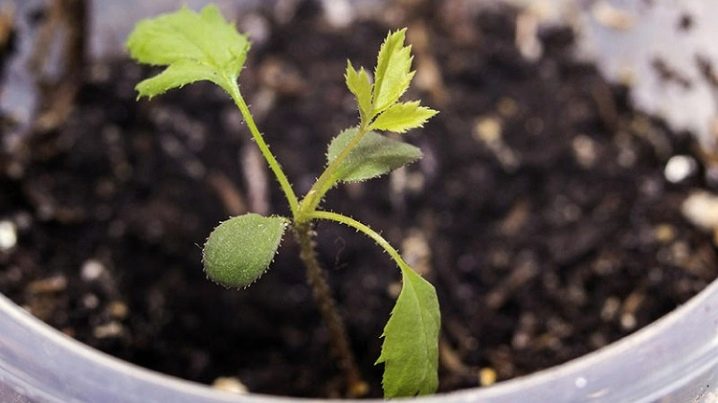
Preparation
When deciding to grow a rose from seeds, it should be borne in mind that seeds from the manufacturer do not always give the expected result. Often, such material gives rise to small shoots and, subsequently, medium-sized buds. Self-collection with the fulfillment of the necessary conditions is guaranteed to allow you to grow a specimen that completely repeats the uterine sample, if it is, in principle, capable of seed reproduction. As a result, the gardener will have a healthy, full-fledged rose bush with large flowers, sometimes unexpected shades, which adds intrigue to the process. The prepared and disinfected seed is placed on a special substrate prepared as follows:
- a paper towel or cotton cloth is moistened in a 20% hydrogen peroxide solution;
- then the material is folded in half, the seeds are placed between the layers;
- the resulting "sandwich" is placed in a plastic zip-bag, zipped, marked with the date and other necessary information, placed in a basement or in a refrigerator compartment with a temperature not exceeding + 5ºC.
The period of exposure in the cold is 2 months.The procedure imitates natural processes. During this period, it is necessary to regularly inspect the package, check it for mold. Its appearance is a signal to change the substrate. When drying, the medium must be humidified. The described method of stratification, despite the two-month period, is considered accelerated. There is a longer and simpler option. For sowing, use a universal ready-made substrate for seedlings. Self-prepared soil consists of sod or garden soil, low-lying peat and river sand. A neutral acidity level is required. Prepared seeds are placed in a soil mixture in a greenhouse, moistened and placed in an environment with a temperature of plus 3-5ºC. Greenhouses will help keep humidity. The holding time is 8 months, periodically the containers should be ventilated.

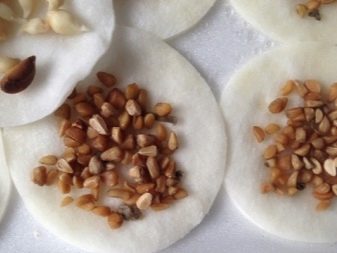
Sowing
Prepared and treated seeds, kept for a certain period of time in a stimulator (Epin, Energen, HB 101), are placed on the surface of a moistened substrate.
- Then they are immersed to a depth of 1 cm.
- Greenhouse conditions are organized - they are covered with glass or film, you can use special greenhouses, disposable containers with a lid.
- After that, they are sent for stratification.
- At the end of the stratification period, the containers are placed in a warm room in a well-lit place.
It can be a window sill, phytobox or just a table with the possibility of organizing additional lighting. After the emergence of mass shoots, you should wait until they get a little stronger, then remove the upper transparent layer. In this case, the sprouts should be protected from direct exposure to aggressive sunlight.
When 2-3 true leaves appear, a pick is carried out in separate glasses. This is the time for the selection of the strongest seedlings, the weak ones go to rejection. Sowing can be carried out in peat tablets.
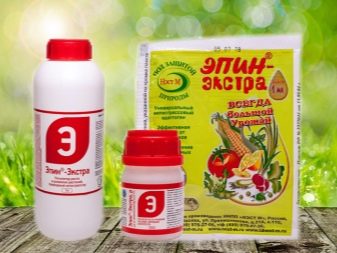
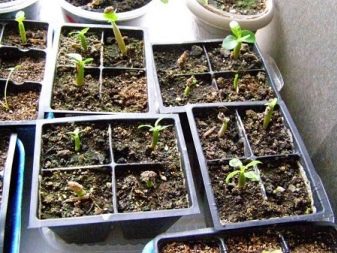
Care
All further transformations of the rose depend on proper care and compliance with the requirements of agricultural technology at the initial stage. It is very important in this intermediate period, from seedlings to transplanting into open ground, to provide the culture with all the conditions for full growth and development. This is the observance of the temperature regime, lighting, feeding, watering.
- Temperature. The ideal ambient temperature for pink seedlings is 18-20ºC. The entire growing period is required to maintain this interval. Sudden changes, cold or excessive heat negatively affect the condition of plants and promising potential.
- Lighting. The light should be bright but diffused. If not phytolamps are used for supplemental lighting, but ordinary ones, then preference should be given to LED samples with a cold white spectrum. The distance from the lamp to the seedlings is 10-15 cm. As the plants grow, the light source is raised.
- Watering. Small weak sprouts need mandatory humidification of the environment, that is, spraying. You can install a humidifier nearby. The hardened seedlings are watered as the soil dries up - it must be in a moist state. Excess moisture must not be allowed.
- Hardening. Planting unprepared seedlings in open ground can lead to the death of plants, the cultivation of which takes a lot of effort. 2-3 weeks before transplanting, containers with seedlings are taken out into the street or open balconies and installed in the shade. Gradually accustom to direct sunlight and natural light levels. At the end of the procedure, the seedlings can already be left outside around the clock so that they get used to daily temperature changes.
A well-lit area is prepared for planting. Roses grow well on clay soils, which should be loose and breathable. The land is enriched with organic matter and complex special fertilizers, coarse river sand, wood chips and bark, sapropel and coniferous sawdust are added.


How to sow outdoors?
If the gardener does not have the desire to grow roses from seeds at home, or does not have such an opportunity, then direct sowing into the ground can be carried out. Prepare the site in advance as described above. The collection and processing of seeds is carried out in the same way as for growing seedlings. The seeds are immersed in the ground to a depth of 3-4 cm, the surface is leveled, and additionally sprinkled on top with a thin layer of soil. If the autumn is dry and warm, then the crops should be slightly moistened, covered with a layer of fallen leaves, hay, agrofibre.
Further stratification occurs naturally. In early spring, after the snow has melted, the shelter is removed, and shoots are awaited. To protect seedlings from damage by night frosts, you should organize a shelter in the form of a low greenhouse.
Spring sowing is also possible - the seeds are kept in growth stimulants, but it will take a long time to wait for the final results.

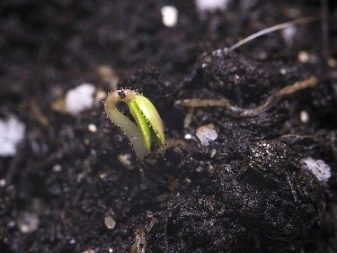

































































































The comment was sent successfully.